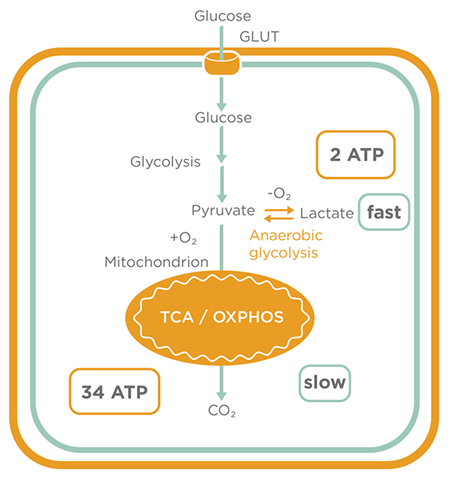Lactate has long been used in human clinical practice as a diagnostic and prognostic aid in critically ill patients1. Lactate can be used as aid to sepsis diagnosis and to aid in monitoring post-surgical morbidity, post-cardiac event morbidity, post-transplant morbidity and in assessing patients recovering from pneumonia.
| Did you know? |
Normal lactate levels are the same for both dogs and humans. Elevated lactate levels in clinical situations in both man and dogs indicates underlying pathology that requires further investigation. |
Increasingly, lactate testing is being used in the veterinary clinic for prognosis and diagnosis in a number of clinical presentations2 and can be used as a triage and risk stratification tool for separating patientinto higher and lower risk categories3. Additionally, the availability of reliable handheld lactate analysers with validated results comparable to laboratory-based lactate testing methods4 means that rapid, cost effective and near-patient results are now easily accessible as a prognostic and diagnostic aid for the veterinarian.
| Lactate is useful tool in treatment decision making |
Whilst lactate is not diagnostic of any particular disease state when taken in isolation as a single reading, it is a useful triage tool in the overall treatment decision making pathway. It can be used as a guide to morbidity and/or the need to further investigate and monitor more closely specific patients. However, it should also be noted that trends in lactate levels provide better prognostic information than a single measure5.
Lactate is a normal by-product of energy use in the body produced largely during anaerobic metabolism (see Figure 1) and typical levels are typically under approximately 2.0 mmol l-1. Elevated lactate levels (hyperlactatemia and lactic acidosis) are an indication of stress which will require further clinical investigation, as lactate is produced when cells are not getting sufficient oxygen to support normal aerobic energy production. This is usually due to tissue hypoperfusion and hypoxia when there is decreased blood flow to cells, either systemically or locally.
Measurements of blood lactate can, therefore, indicate the degree to which oxygen is being transported adequately around the body. As an increase in lactate levels occurs before changes in heart rate, blood pressure, or urine output, so this makes it a sensitive indicator of hypoperfusion5. Thus offering ways of assessing the severity of pulmonary or cardiovascular disease, how the body responds to treatment, and the ability to predict health outcomes and influence decisions regarding the improvement of survival prospects6,7.
Crucially, it should be noted that when considering treatment options for hyperlactatemia, the underlying cause of such elevated blood lactate concentration must first be established. Although poor perfusion is the most common reason, other factors can come into play. Such factors that can artificially raise lactate levels include:
 Figure 1: Lactate is a metabolic product produced by the anaerobic respiration of glucose
Figure 1: Lactate is a metabolic product produced by the anaerobic respiration of glucose
Find out more about the different methods for testing, the symptoms and the associated conditions, and understand how POCT can help vets provide a specialised service to their clients.

Singer et al 2016 JAMA 315 801-810; Shankar-Hari et al 2016 JAMA 315, 775-787; Vincent et al 2016 Critical Care
Sharkey & Wellman 2015 – Use of lactate in small anima clinical practice
J Vet Emerg Crit Care (San Antonio). 2018 Mar;28(2):106-121. Clinical use of plasma lactate concentration. Part 2: Prognostic and diagnostic utility and the clinical management of hyperlactatemia. Rosenstein PG1, Tennent-Brown BS1, Hughes D1. https://www.ncbi.nlm.nih.gov/pubmed/29533517
Di Mauro & Schoeffler 2016; Acinero et al 2007; Karagiannis et al 2013
M.Savigny & J.Berzon. Vetflio March 2019. Measuring Blood Lactate Levels
Constable (1999) Blood Lactate and Pyruvate Concentrations in Cattle with Abomasal Volvulus. Dairy Cattle. Illinois Livestock Trail https://livestocktrail.illinois.edu/dairynet/paperDisplay.cfm?ContentID=303,
Sharkey (2013) Use of Lactate in Small Animal Clinical Practice. Veterinary Clinics of North America Small Animal Practice 43: 1287−97 https://www.researchgate.net/publication/258062768_Use_of_Lactate_in_Small_Animal_Clinical_Practice
Copyright © 2024 | Powered by Intergage

Please note: Not all products are available in all countries. Please check availability.
Newsletter
Keep up to date with all our activities, events, exhibitions, promotions, investor news & more.